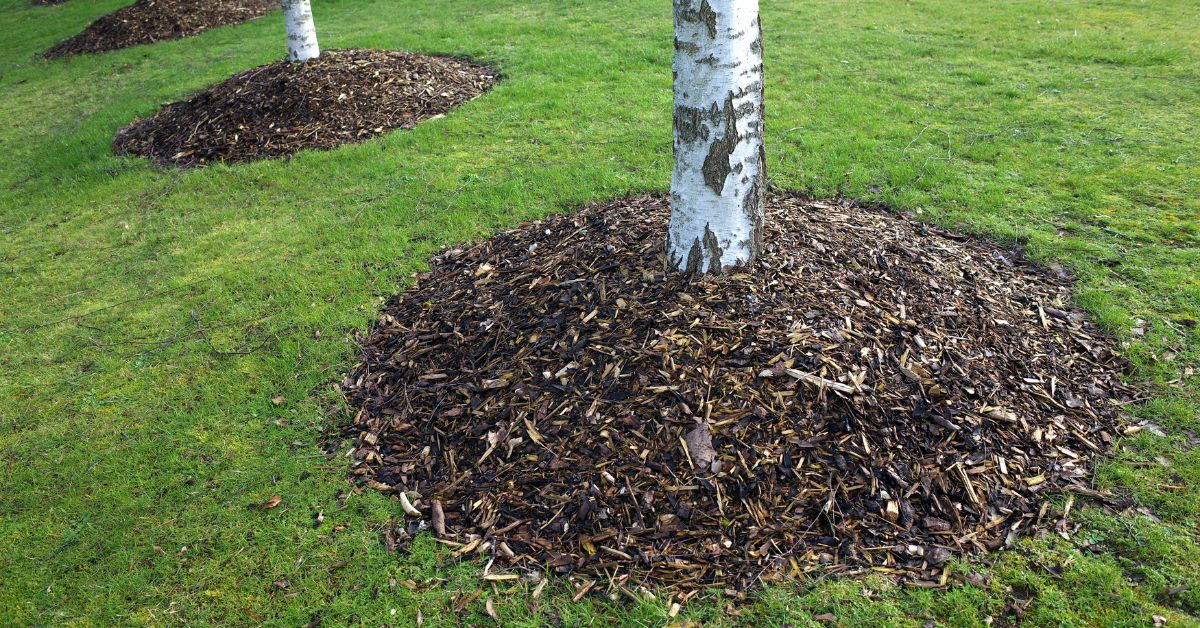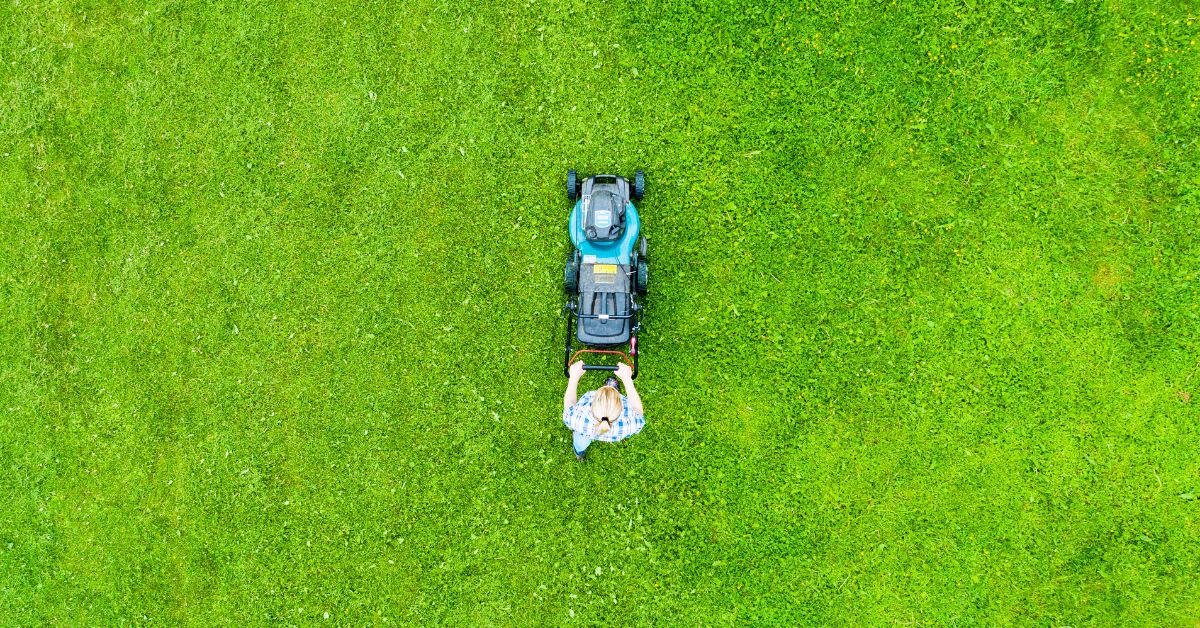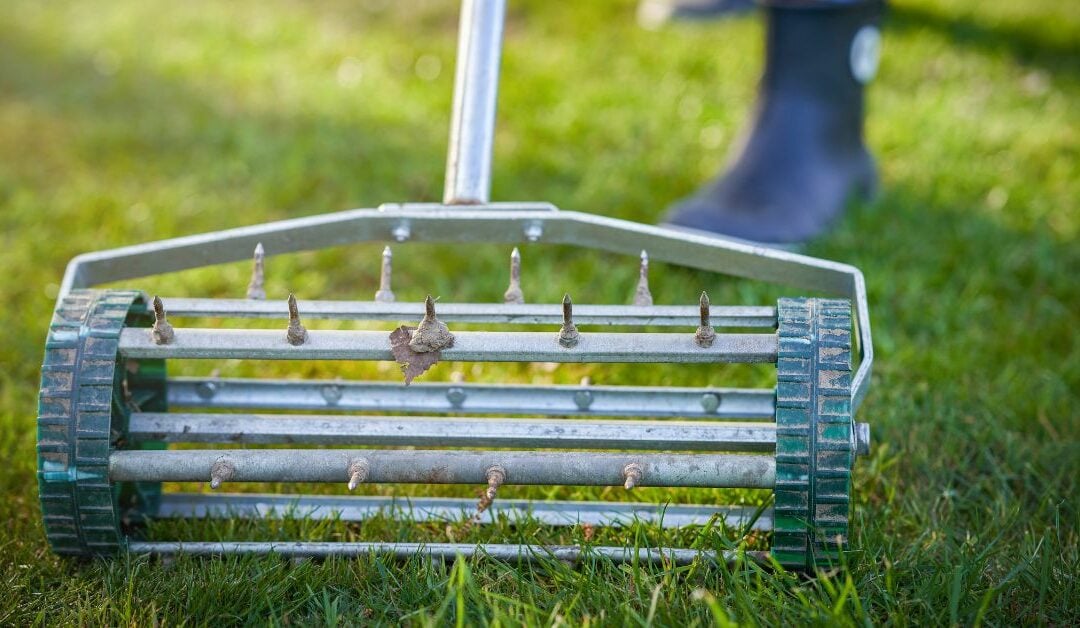Your yard needs adequate sun to grow healthy and vibrant. However, on hot summer days with no rain in sight, the sun can bake your lawn to a crisp. No homeowner wants dry, brittle grass that is uncomfortable to walk on and looks scorched. It might seem like there is no hope for your yard to recover from hot, dry weather, but there are actually plenty of techniques that can help. Watch your lawn bounce back when you follow TurfPride’s advice in this guide.
Aerate the Soil
Aerating the soil is crucial for improving the health of your yard. By poking small holes in the ground, you allow air, water, and nutrients to penetrate deeper into the soil. This process relieves soil compaction and promotes root growth, helping your grass recover more quickly. Aeration is especially important after a period of drought, as it allows water to reach parched roots more effectively.
Deep Watering
Deep watering is essential to restore moisture levels in your yard. Many homeowners partake in frequent, shallow watering, thinking it’s the best method. However, the opposite is true. Less frequent watering but longer sessions encourage roots to grow deeper into the soil, making your grass more resilient to future dry spells. Water your yard early in the morning or late in the evening to minimize evaporation and ensure the water reaches the roots.
Add Organic Mulch
Adding organic mulch to your lawn and landscaping can help retain moisture and regulate soil temperature. Mulch acts as a protective layer, reducing water loss through evaporation and keeping the soil cooler. It also prevents weed growth, which competes with your plants for water and nutrients. Choose organic materials like wood chips, straw, or compost to provide additional nutrients as they decompose.
Reseed Bare Patches
After a hot, dry period, you may notice bare patches in your lawn. Reseeding these areas can help rejuvenate your yard. Choose a drought-tolerant grass variety that suits your region and follow the recommended seeding rate. Water the newly seeded areas regularly to ensure proper germination and establishment. Over time, the reseeded patches will blend seamlessly with the rest of your lawn.

Use a Soaker Hose or Drip Irrigation
Using a soaker hose or drip irrigation system ensures efficient water delivery directly to the roots. These methods minimize water waste by reducing runoff and evaporation. A soaker hose slowly releases water along its length, while drip irrigation delivers water directly to each plant’s base. Both options are ideal for conserving water and maintaining consistent soil moisture levels.
Fertilize Appropriately
Fertilizing your lawn provides essential nutrients that promote healthy growth and recovery. Choose a balanced, slow-release fertilizer that is appropriate for your grass type. Apply the fertilizer according to the manufacturer’s instructions, taking care not to overfertilize, which can stress your grass further. A well-fed lawn will be better equipped to withstand and recover from hot, dry conditions.
Mow High
Mowing your lawn at a higher setting helps protect it during hot, dry weather. Taller grass shades the soil, reducing evaporation and keeping the roots cooler. It also promotes deeper root growth, making your grass more drought resistant. Aim to keep your grass around 3 to 4 inches tall and avoid cutting more than one-third of the blade length at a time to prevent stress. Additionally, leaving grass clippings on the lawn can add valuable organic matter and help retain soil moisture.
Enrich Soil With Compost
Amending your soil with compost can improve its structure and water-holding capacity. Compost adds organic matter, which enhances soil fertility and promotes healthy root growth. Spread a thin layer of compost over your lawn and gently rake it in, allowing it to work its way into the soil. Regular composting can significantly improve your yard’s resilience to drought conditions. And if you’re looking to make your own compost, it’s super easy to do from the food scraps in your kitchen.
Shade Vulnerable Areas
Providing shade to vulnerable areas of your yard can help protect them from the scorching sun. Use shade cloths, umbrellas, or strategically placed plants to create shaded spots. Shading is especially important for young or newly planted grass and plants, which are more susceptible to heat damage. Shaded areas retain moisture better, reducing the risk of heat stress.

Prune Dead or Damaged Plant Material
Pruning dead or damaged plant material helps redirect the plant’s energy towards healthy growth. Remove any brown, wilted, or broken branches and leaves to encourage new growth. Proper pruning also improves air circulation, reducing the risk of disease and pest infestations. Always use clean, sharp tools to make clean cuts and minimize stress on the plants.
Install Rain Barrels
Installing rain barrels is an excellent way to conserve water and provide a sustainable source for your yard. Collecting and storing rainwater allows you to water your plants without relying on municipal water supplies. Position the barrels under downspouts to capture runoff from your roof. Use the collected rainwater to hydrate your garden during dry periods, reducing your water bill and environmental impact.
Avoid Chemical Treatments
During recovery, it’s best to avoid chemical treatments on your lawn. Pesticides and herbicides can stress your grass and soil, hindering the recovery process. Instead, focus on natural and organic lawn care practices. Hand-pull weeds, use natural pest repellents and consider organic fertilizers. These methods are gentler on your yard and promote long-term health.
TurfPride’s Commitment
At TurfPride, we understand how challenging it can be to maintain a healthy lawn during the scorching summer months. That’s why we offer professional lawn care treatment services designed to keep your yard thriving, even in the toughest conditions. Our team of experts uses environmentally friendly practices and customized treatment plans tailored to your lawn’s specific needs.
Whether you need help with fertilizing, soil aeration, pest control, and more, we’re here to assist you every step of the way. Don’t let the summer heat take a toll on your lawn—reach out to us today and let TurfPride help your yard remain lush and green all season long.
Reviving your yard after a hot, dry spell may seem challenging, but the right strategies make it a feasible goal. By following these ways to help your yard recover from hot, dry weather, you’ll soon enjoy a lush, vibrant outdoor space. Don’t forget to reach out to TurfPride, and we’ll have your lawn back to its healthy self in no time!

